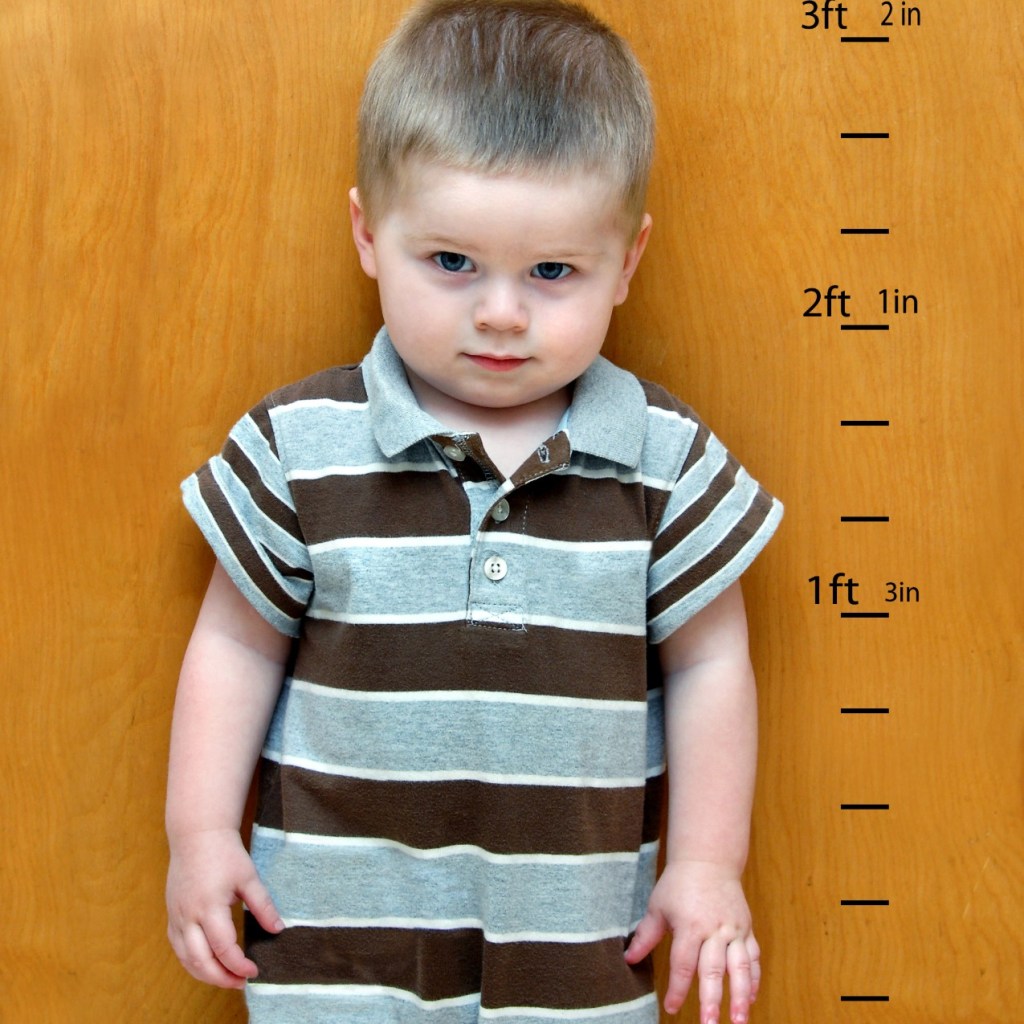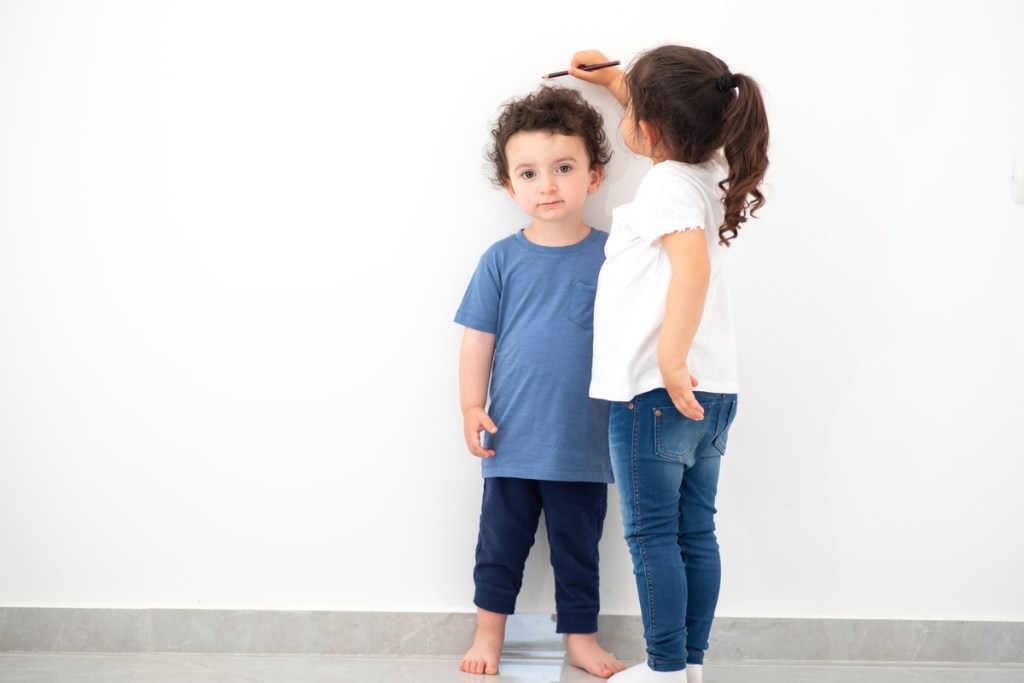Life is never boring when you have a toddler. This is a stage of development full of new challenges and exciting milestones that see them changing at a rapid pace. Because of all these changes, it is hard to keep up, and you may find yourself wondering if your toddler is growing at a normal rate.
Even though your pediatrician probably went over the stages of toddler growth spurts, you might want to know specific details involved in your child’s development and what changes you should be looking for to ensure they’re on track. All kids are different and the ages at which they hit growth spurts will fluctuate. But there are general guidelines to watch for to know if you should be concerned. Here’s what you need to know about toddlers and their growth spurts.

When do growth spurts happen?
Your toddler’s growth spurt will happen anytime between the ages of two and four. Some children grow at a steady pace throughout their toddler stage, while others gain a couple of inches over the course of a few months. This applies to their weight gain as well. You might see your child gain a few pounds over a short period before their physical development slows down for a while.
It’s important to remember every child is different when it comes to growth. On average, toddlers will grow 2 to 3 inches a year. It happens gradually or in shorter spurts. Genetics play a role in how quickly your child develops, so don’t worry if it looks like your toddler is moving at a slower pace. They will probably catch up to their peers later.

How much do toddlers grow?
The toddler years are one of the stages where your child will go through significant changes. While babies grow and gain weight at a rapid pace, growth slows down during the second year of their lives when compared to their first few months.
Before age 2
Witnessing toddler growth spurts may be common in one family and not another. Between your child’s first and second birthdays, it’s normal to see an average growth of 5 inches and 5 pounds. You will notice your child’s head grows in size and should reach 90% of their adult head size by the time they turn two years old.
Between ages 2 and 3
From 2 to 3 years old, your child should gain around 4 pounds and grow by 2 to 3 inches. They’ll become more active and comfortable with walking and running. Your toddler’s silhouette will change a lot during their third year. They will get longer legs, lose their round tummy, and you will notice structural changes in their face. Your little one will no longer look like a baby by the time they turn 3 years old.
Between ages 3 and 4
Between the ages of 3 and 4, your child will gain anywhere from 4 to 6 pounds and should grow by 2 to 3 inches.
Remember, the growth happens at a steady pace or in shorter spurts. You might notice short growth stages where your child gains 3 inches and puts on weight over the course of a few months before growth slows down for a while. Your toddler’s personal pace is normal as long as they grow an average of 2 to 3 inches and gain 4 to 5 pounds a year. Ask your pediatrician if you need help to determine if your child is growing at a normal pace.

Common signs your toddler is about to experience a growth spurt
If you are a parent who loves to look for signs to track, there are plenty to keep an eye out for to indicate your toddler is about to go through a growth spurt.
- Increased appetite. As your toddler’s body grows, so will their caloric intake. Seeing your child’s appetite increase is normal because toddlers tend to be extremely active, but this also signifies your toddler is going through a growth spurt.
- Cravings. It’s not uncommon for toddlers to have a favorite food. However, growth spurts cause cravings for foods that contain the vitamins and minerals your child needs to get them from one phase to the next.
- Growing pains. Children often experience dull aches and soreness when they grow. Your toddler might be grumpy, tired, or fussy because their limbs feel sore due to growing pains. Be ready to give tiny leg rubs.
- Sleepiness. Growing up is exhausting. You might notice your toddler is more tired than usual. Make sure they get the sleep they need since their body releases the growth hormone while they sleep. Make room for cuddle time and extra naps.
- Outgrowing clothes and shoes. A common sign your toddler is going through one of their growth stages is their clothes don’t fit anymore. Toddlers outgrow pants at a fast pace as their legs get longer.
- Clumsiness. All toddlers are clumsy, but their limbs growing rapidly creates an additional coordination challenge.
- Mood shifts. We know — toddlers are always moody. But going through physical changes makes your toddler feel extra tired and grumpy. Changes in hormonal levels affect their mood.
- New skills. Brain development is one of the many aspects of the growth spurts toddlers go through. You will see your kid make progress in areas like language and motor skills at a dizzying pace.

Why is my toddler not sleeping during growth spurts?
So, if sleepiness is a sign of an impending growth spurt, why isn’t your child sleeping? After all, parents of toddlers take sleep anytime they can get it, so it is a bit frustrating when your rapidly growing child isn’t sleeping more. In fact, sometimes a child who is going through a growth spurt may actually sleep less, which is a result of being hungrier or because they may be experiencing the growing pains.
Making sure your toddler is eating enough and comfortable throughout the day will help them get the rest they need. Fortunately, sleep disruptions caused by growth spurts don’t tend to last too long and you should see your little one settle back into their routine in no time at all.

Other factors to know about during a toddler’s growth spurt
We know, that is so much to deal with during this stage in your tot’s life. It is a lot. Imagine how they feel going through it all. But there are a few more things to know about your little one during this time.
Your toddler will have big emotions that need extra attention
Yes, toddlers have all the emotions, but this is partly why. If you were having leg pains, were hungrier than normal all the time, and couldn’t sleep, you’d be a little crankier than usual, too.
But if your child isn’t nurtured during growth spurts, they could also have fewer of them, or the spurts could be shorter, and your tot may not reach their full growth potential. Being there for your child emotionally will have positive effects on their growth. A child who isn’t mentally and emotionally supported could be shorter than they would otherwise be.
If your child has any underlying conditions, it could affect their growth
If your toddler has thyroid problems, heart problems, kidney problems, or even allergies, their growth could be affected. If you notice your tot isn’t growing at a pace you think is normal, speak to your doctor, but know if they have certain conditions, their spurt might sputter out early.
Every child is different and will grow at a different pace. While some children go through faster growth spurts, others grow at a steadier rate. We recommend using a chart to plot your child’s progress and meeting with your pediatrician regularly to track your child’s height and weight gain, along with developmental milestones. Take lots of pictures, chart every milestone, and be amazed at how quickly your little one grows up.
Children will reach around 50% of their complete adult height by the time they are three. Help your toddler be as tall as they have the potential to be with proper sleep, lots of tasty food, and emotional support — and don’t forget those little leg rubs.



